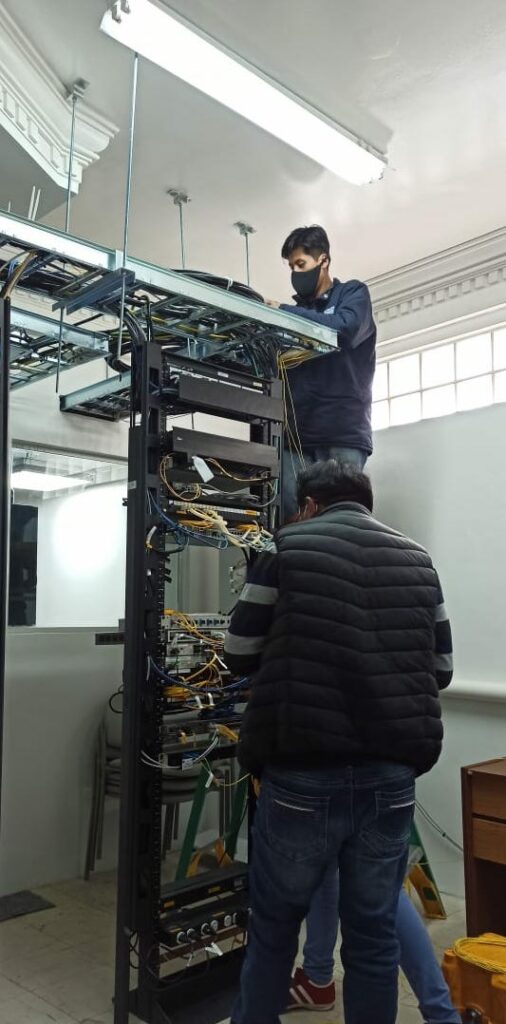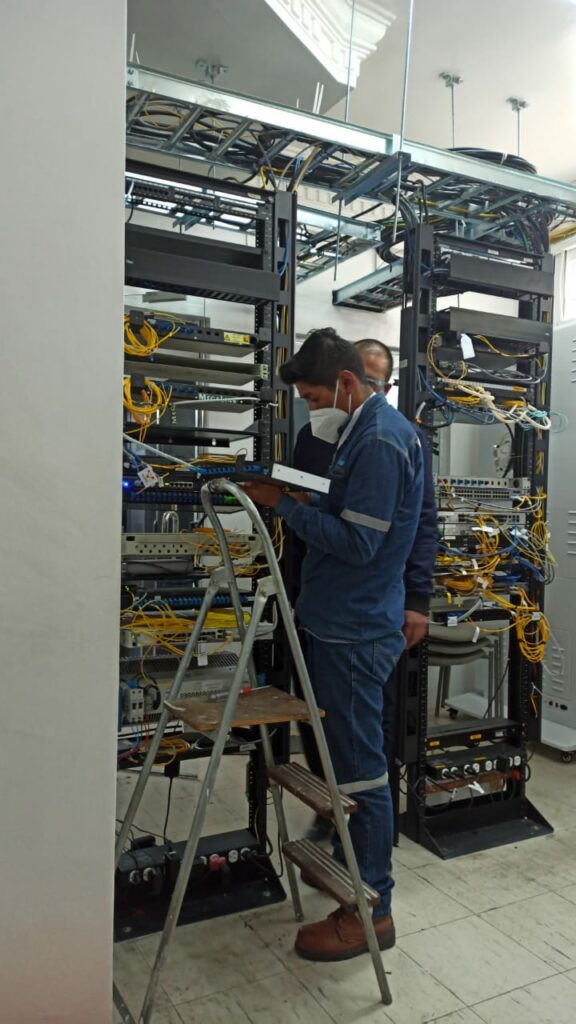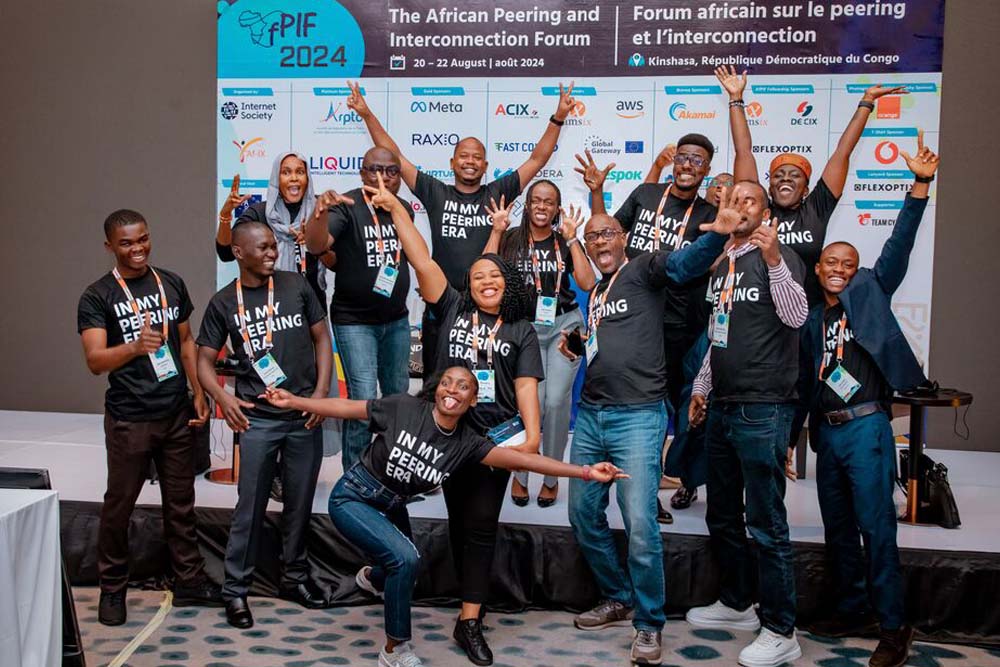Peering is a fundamental part of how the Internet works. It allows networks to exchange traffic directly, reducing reliance on intermediaries. This improves performance, lowers costs, and increases network resilience.
This is why the Internet Society works with technical communities, network operators, and policymakers to support peering, helping to expand access and strengthen the Internet’s infrastructure. Peering helps create a more efficient and scalable Internet by fostering collaboration and promoting best practices.
What is Peering?
Peering is when two or more Internet networks agree to interconnect and exchange traffic (communications and data sent between their customer’s devices) directly without charging each other any fees.
When networks are not peering, all the Internet traffic they carry has to go through other networks that have a more expansive regional and global reach. These large networks offer a carriage service, known as transit, to other networks on the Internet. These networks are referred to as transit providers. Sending traffic through transit can increase the distance it travels, therefore making it slower and more expensive.
When more networks peer, data can be routed more efficiently between them without having to go through a third party, making it travel faster, reducing latency, and potentially lowering costs.
Usually, when networks agree to interconnect and peer with each other, they do so in an Internet exchange point, or IXP.
The management team of NAP del Caribe, a data center that houses an IXP in the Dominican Republic—IX.DO.
Why Do We Need Peering Infrastructure?
Imagine you sent a letter to a friend who lives in your town, but when you posted it, it had to go via airmail across the country to a distribution center and then back to your hometown before it got delivered. It doesn’t make sense, does it?
In many cases, this is how Internet traffic is routed—through transit providers linking independent networks with each other. This is why we need IXPs, which allow networks to exchange traffic locally.
Now, imagine you want to video call the same friend. In places with little peering infrastructure, it’s common for all the data that carries your voices and video to go across the country or even abroad before reaching the other end of the call in the same town where it started.
That may cause problems like annoying delays, faces freezing, or even getting disconnected from each other. If the networks that carry your data were peering at a nearby IXP, you would have a faster and more reliable connection. This applies to many digital services and activities, like online banking or working from home.
Peering infrastructure makes the Internet more resilient. If all the data in your network had to go to a transit provider in another continent, a disconnection, like a sudden cut on a submarine cable that transports data in and out of your country, would leave your whole town without Internet. When traffic is exchanged locally, you can still access local services when incidents like these happen.


People install equipment for Bolivia’s IXP—PIT Bolivia.
What Are the Different Kinds of Peering?
There are multiple types of infrastructure involved in peering, but the three main peering and interconnection strategies are:
Internet Exchange Points (IXPs) – Places that host infrastructure for different networks, such as Internet service providers, mobile operators, and content delivery networks, to interconnect and exchange Internet traffic directly.
Private Network Interconnects (PNIs) – Direct, dedicated connections established between two networks to exchange Internet traffic privately, bypassing public IXPs. They are typically set up between large networks, such as content providers (like streaming services) and Internet service providers, to improve performance, reduce latency, and increase security.
Remote Peering – A method that allows networks to connect to an IXP without being physically present at its location. They do that by using a third-party carrier or network provider to transport traffic from the network’s location to the IXP. Remote peering enables networks to access the benefits of peering without the expense of setting up physical infrastructure at the IXP site.
What Can Make This Infrastructure Sustainable?
Peering infrastructure is sustainable when both the infrastructure itself, like IXPs, and the local technical community that maintains it, can work and thrive in the long term. This requires:
- A local technical community with the skills to build and maintain IXPs
- IXPs that are built in a neutral location by a multistakeholder community
- IXPs that local and regional networks are interested in peering at—these networks could be run by local Internet service providers, organizations like universities, content providers like streaming services, and many others
- IXPs that are open, and aimed at being inclusive, collaborative, and non-competitive
- A policy environment that supports initiatives to keep local traffic local
How Does the Average Person Benefit From Peering Infrastructure?
The two biggest benefits of peering are Internet affordability and reliability.
When networks agree to exchange traffic locally, they only need to have an agreement with each other and the IXP. This means that if they don’t charge each other any fees, any overhead costs that may come from sharing network usage (if there are any) are far fewer than the costs associated with international data traffic or transit. That makes their services cheaper, which usually reflects on the costs people pay for connectivity. Simply put, the Internet service bills are cheaper.
When networks exchange traffic locally, people get what they need faster, and there are fewer chances of issues. For example, if you’re streaming a movie from a server halfway across the world, you will probably have to wait a bit before it starts to play, and the data you’re accessing might face busy network traffic along the way, so your show could pause while you wait for the data to get there. But if you had a content delivery network peering in a nearby IXP, you would access data locally, so you could watch your shows faster and without interruption.
What is the Internet Society Doing to Support Sustainable Peering Infrastructure?
We support the growth and improvement of peering infrastructure through direct funding, training, advocacy, partnerships, and events. These include:
- The Sustainable Peering Infrastructure Funding Program, where we provide funds for new and existing IXPs
- Helping existing IXPs mature and advance by providing technical, developmental, policy, and regulatory support
- Partnering with regional IXP associations
- Continuing to support global peering events to showcase best practices, like AfPIF and our peering roadshows and workshops
- Advancing the 50/50 Vision
- Capacity building to train local communities and technical engineers on the best practices to get the most value from the IXPs

A group of people at the African Peering and Interconnection Forum (AfPIF)
Is There Anything Else People Should Know?
Keeping traffic local requires conversations, agreements, and a strong technical community. An Internet exchange point is as valuable as the connections made there, and those connections start with a handshake.
To make them happen, we need people who are interested in collaborating. That’s why local technical communities, which include IX associations, are so important. These people get together at events where they debate peering and connectivity, get to know each other, and find opportunities to work together.
We have been promoting events like these, such as the African Peering and Interconnectivity Forum (AfPIF), and supporting technical community events through the Sustainable Technical Communities grant program.
In 2025, we will hold 30 peering roadshows and workshops worldwide. Keep an eye on our Sustainable Peering Infrastructure page for information on upcoming events.
Image © Claus tezokeng chiha, © Nap del Caribbean, © Carlos Sanabria, © D-Wway Production

